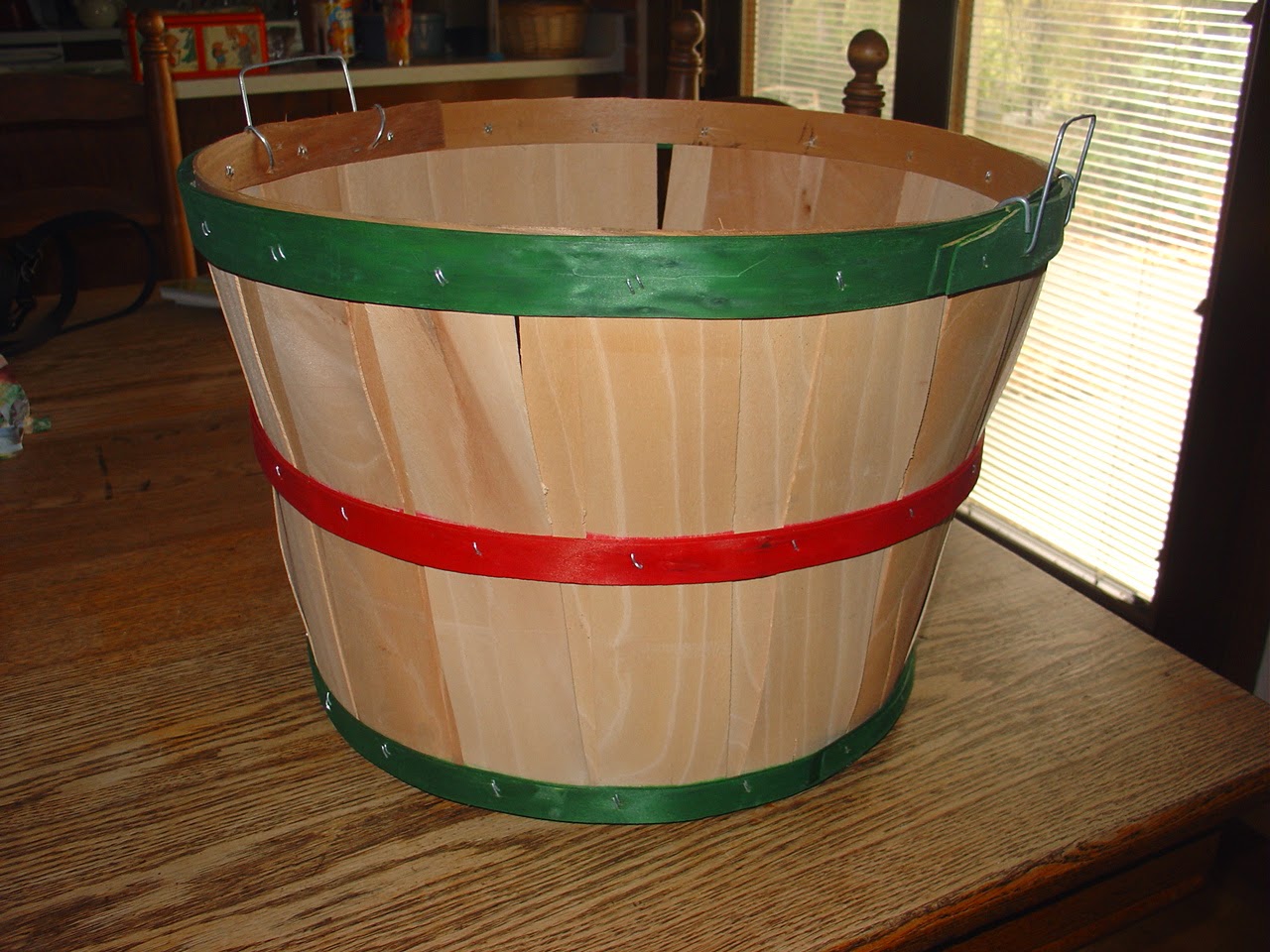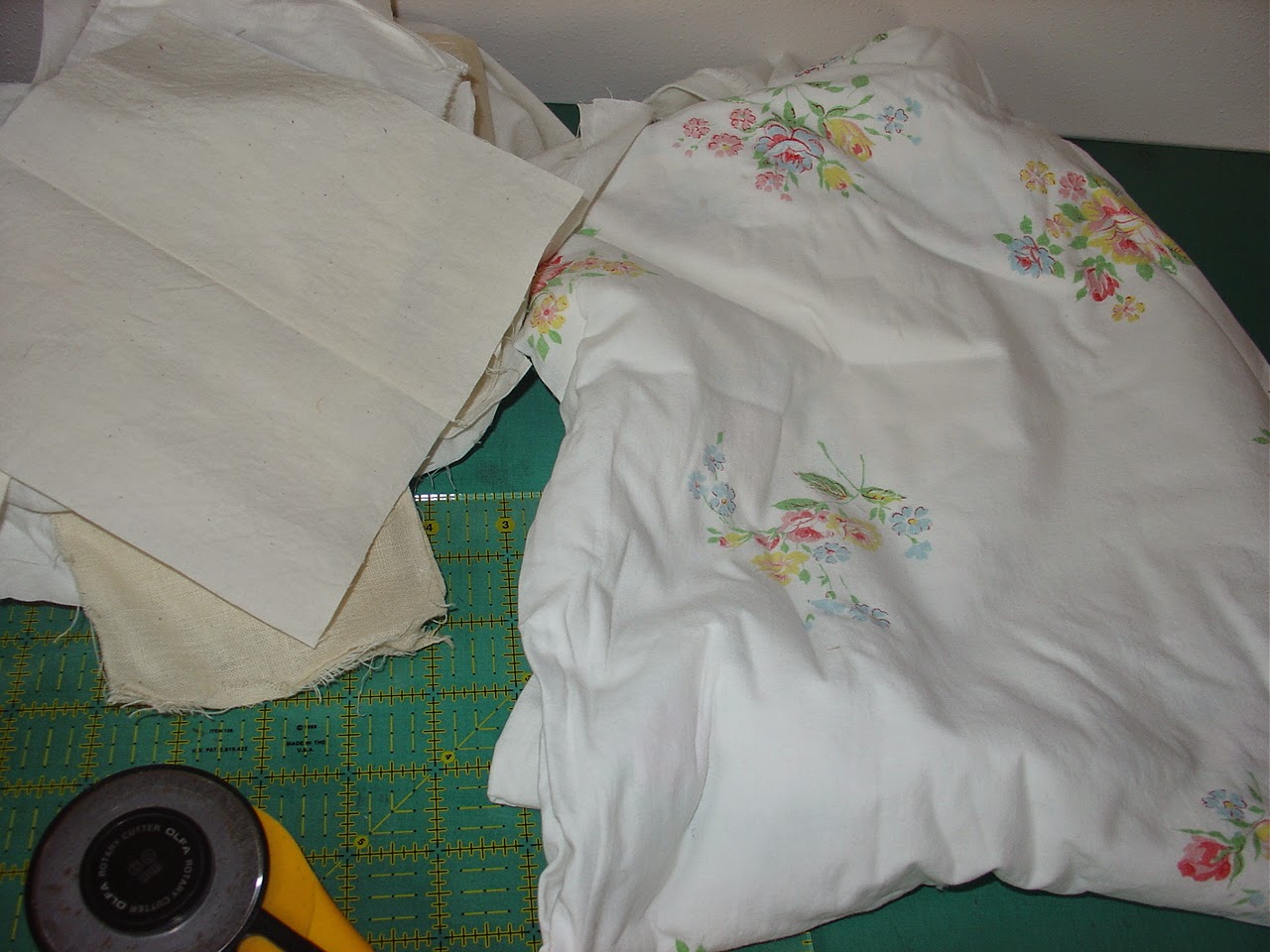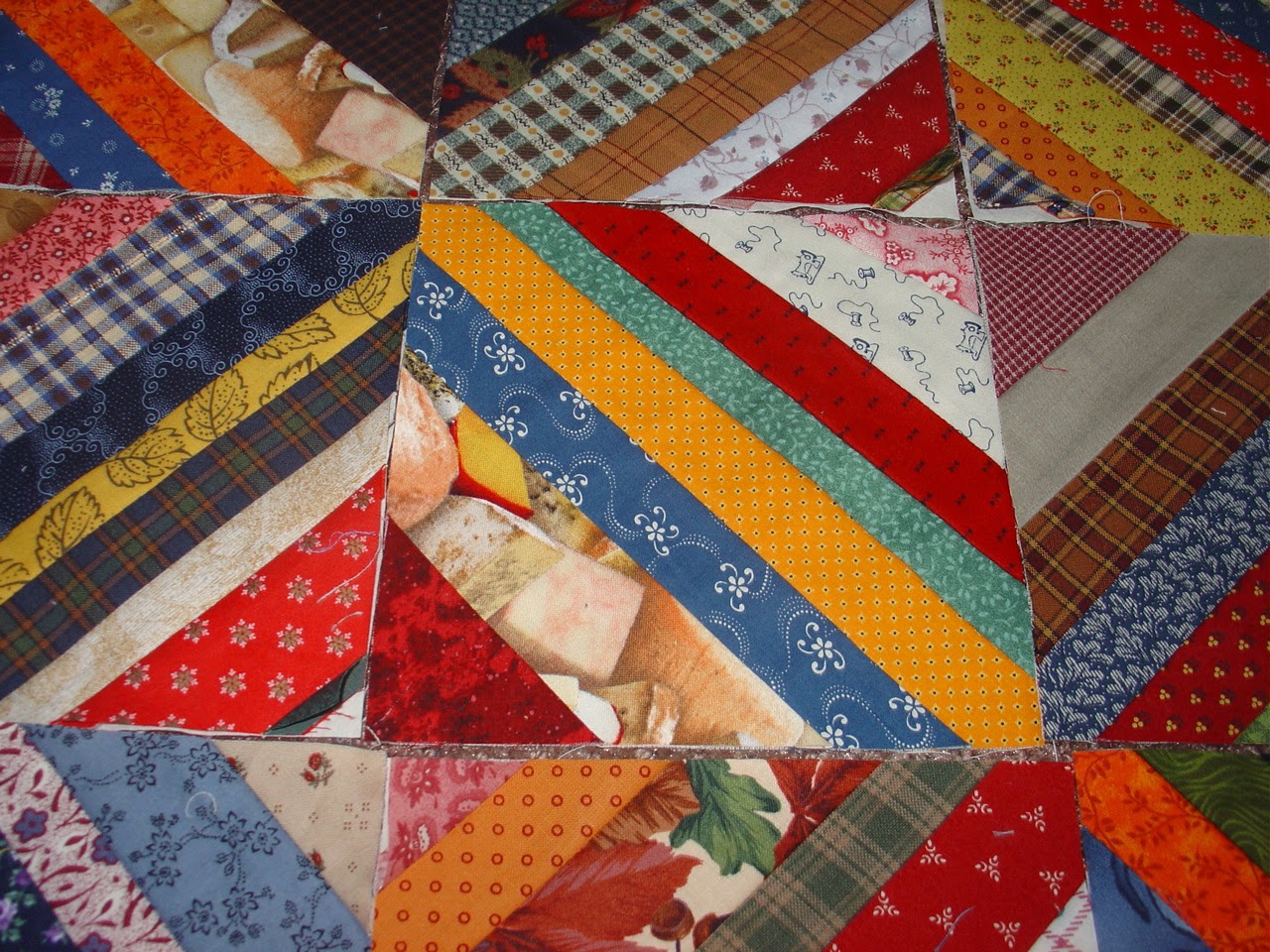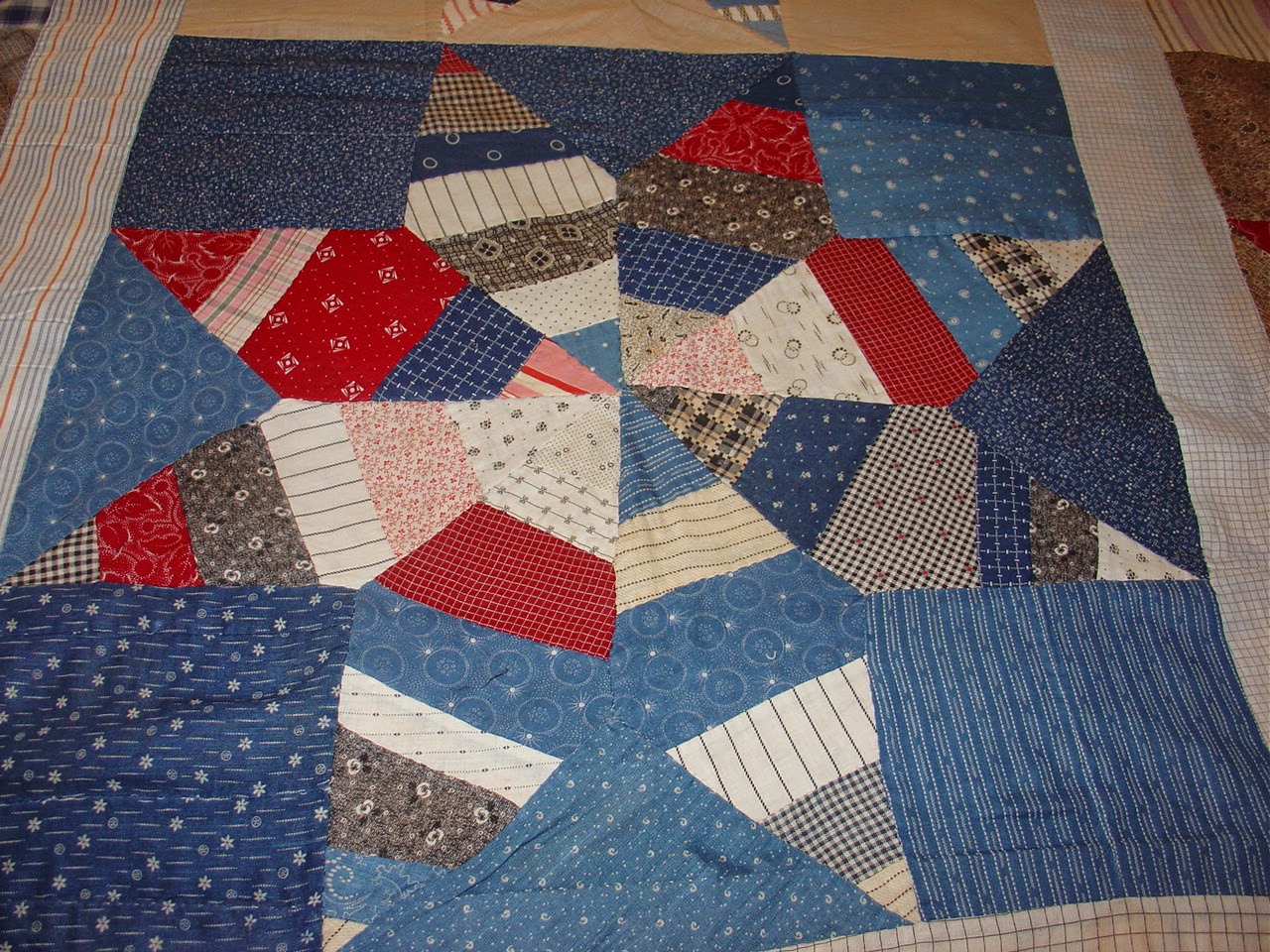Here's my favorite use for a bushel basket. This is where the strings end up when I'm sewing--pieces cut from backing, stray triangles, odd shaped pieces, strips less than 1.5 in. wide, etc.
This is what I've been doing with the strings. I'm making 6.5 in. blocks, and I'm planning to set them side by side. I was going to use narrow strips between them, but I like this better.
I'm using my trusty Singer model 15 treadle. I work on 3 blocks at a time, so I can leave one in the machine and take two to the ironing board. I press after each strip is added. Once the blocks have a few strips on them, I can add strips first to one side and then to the other side before I have to press.
My favorite part for each block (aside from choosing the strips) is when I get the foundation filled up and it's time to trim it.
I lay it wrong side up, so I can see the edges better, and then I trim with the rotary cutter.
There, all done!
You might have noticed that my foundations are cloth, rather than the usual paper. I do that for two reasons. The first reason is laziness--I just don't like to spend all that time ripping the paper off when I'm done. Cloth foundations stay in the quilt. The second reason is more recycling--see below.
I buy lots of fabric at flea markets, antique stores, etc. Sometimes I buy a box with some good stuff mixed in with some less than good stuff. Foundations are something I can make with that less than stellar fabric. A lot of the foundations for this quilt are from a large piece of very loosely woven muslin that I would NEVER use on the top of a quilt. The pile above is poor quality muslin (on the left) and most of an old cotton sheet (on the right). All this stuff gets washed before it goes into the quilt.
I piece the foundations if necessary to make them large enough. I cut them 7 in. square, and then square them up to 6.5 in. when I trim the blocks.
Before I started, I decided on the type of colors I wanted for this quilt. A while back I made a string baby quilt out of bright scraps. For this quilt, I'm using more of a fall color scheme, with lots of browns and greens, perked up with reds, yellows, blues, and little bit of orange. Most of the orange fabrics come from scraps left from the Celtic Solstice mystery quilt led by Bonnie Hunter last year. Most of the plaids were given to me by a friend (thanks, Debbie!) I don't use a lot of light fabrics, but I do sprinkle them in here and there.
What happens when I run out of fall colors in the bushel basket? I go shopping in my scrap bins!
These are my 2 in. scrap strips. If the blocks need a little more yellow or red, etc., I pull some out of here. By mixing in strips from the bins, I'm adding more variety.
I don't go any bigger than 2 in. wide, mainly because I like the way the skinnier strips look.
These are the 1.5 in. wide strips. Most of my fabric scraps are reproductions, because I've made so many reproduction quilts. For this quilt, I'm using the repros but also anything else that works color wise.
For some reason, there seems to be a food theme happening on lots of the blocks. (Did you notice the cheese fabric in the other pictures?)
Thinking about string quilts made me want to look at my antique examples again. I really love string quilts, and I have collected some good ones.
Isn't this a sweet top? I bought this from my friend Joey last fall.
There are some pretty big chunks being used in these diamonds.
Here's the back. You can see that the diamonds are machine pieced on cloth foundations.
Here's another 8 pointed string star. I found this one in an antique store in Indiana. The fabrics in this one date it to c. 1910.
I just love the reds and blues of this time period.
Here's the back--cloth foundations again, probably old clothes.
I bought this tattered old top in Kentucky, the first time I went to the big quilt show in Paducah. The block is often called Rocky Road to Kansas.
This one was pieced on newspaper foundations. Tiny bits of the paper are still sewn in the seams. This one was sewn by hand.
Next time, I show some more foundation pieced quilts and blocks from my collection. If you'd like further instruction on making a string quilt, I suggest reading Bonnie Hunter's String Quilting Primer. You can get there by clicking on the link below.
String Quilting Primer (by Bonnie Hunter)
Happy quilting (and recycling)!





















This was some great information! Thank you!
ReplyDeleteThanks, Missy! I hope you have some time to sew this week.
Delete